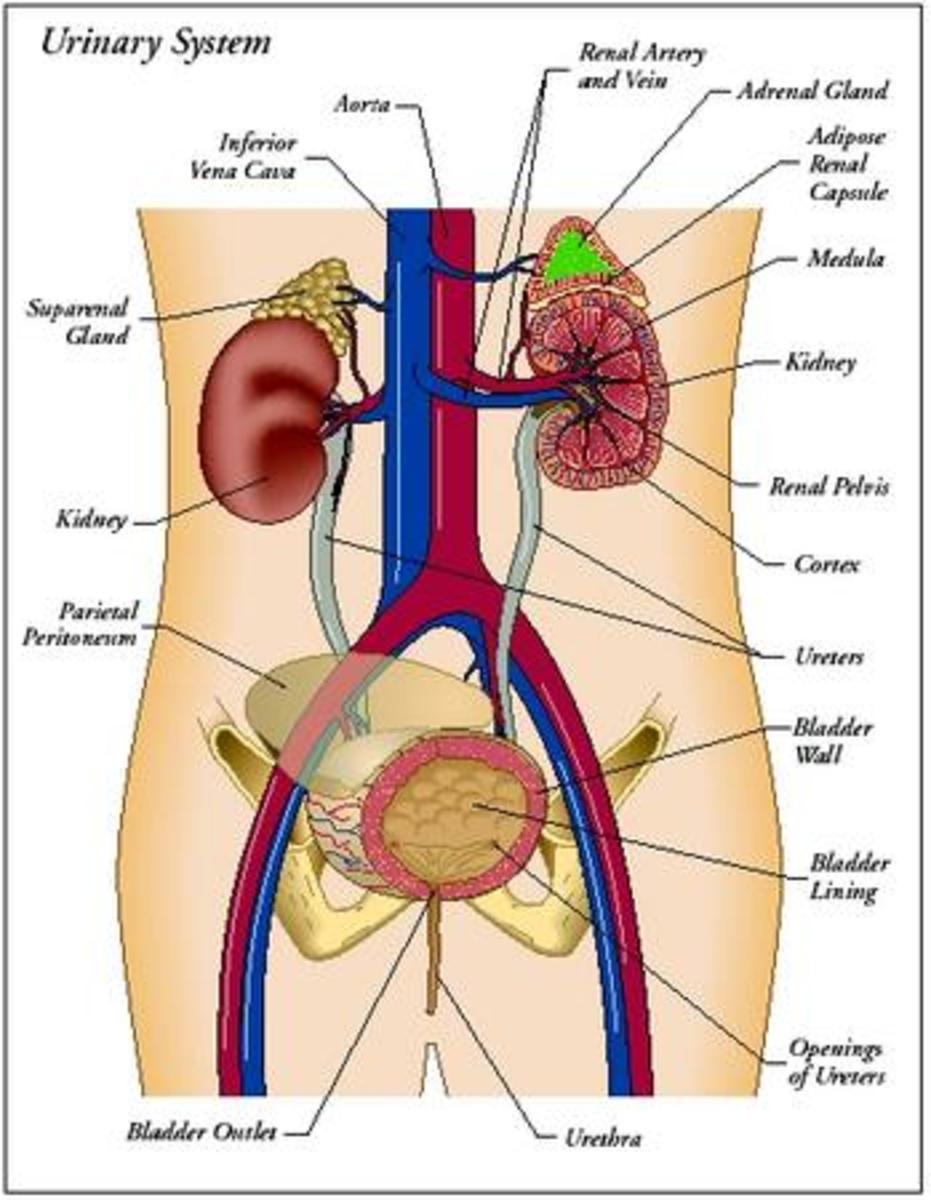Controlled Pragmatic Trial and Local Infiltration Analgesia
Protcal Analysis
The study analyses controlled pragmatic trial and whether local infiltration analgesia results in any early readiness. The study specifically researches on discharge after total knee replacement (TKR) and total hip replacement (THR). The protocol also evaluated different steps involved in case there is femoral nerve block. The protocol was meant to give infiltration to patients receiving local infiltration using peri-articular injection of morphine, bupivacaine, adjuvant analgesics and methylprednisolone.
The patients, in which the protocol was to be used, include those with PCEA femoral nerve blockade. The analgesia includes bupivacaine/hydromorphone PCEA, bupivacaine nerve block and adjuvant analgesics. The average time until the protocol was ready to be discharged was 3.2 days (1.8 to approximately 7.0) especially in the PCEA nerve blockade group. The average scores for pain for patients receiving local infiltration are seen to be a bit higher especially when walking 9p=0.0084). However, they were no significant statistical differences when a patient was at rest. The average opioid consumption was bigger in patients receiving local infiltration.
The choice between the two types of analgesia could not be made using time as the basic factor of discharge after a particular surgery. Other secondary effects were almost similar. However, patients using PCEA nerve blockade had relatively lower pain scores during continuous passive movement and while walking. In case PCEA nerve blockade is not readily available, local infiltration may be employed instead (Raders et al., 2007). This is because local infiltration gives almost equal pain scores at rest and level of stay following TKR.
Components Parts of the Protocol
Several components of the protocol were included. Some of them were main components while some were just supportive components. Supportive components were meant to give details on major components of the protocol.
One of the major components that were inculcated in the protocol is PCEA. Patient Controlled Epidural Analgesia (PCEA) is a method self-administration that is done by patients of narcotic-analgesia agent using epidural catheter and done through a dedicated programmable infusion pump. On the other hand, Combined Spinal-Epidural Anesthesia (CSE) is a type of regional anesthesia that incorporates advantages of both epidural and spinal anesthesia. Sensory Response Level (Dermatome) is the area of the skin that is supplied by the sensory nerve then corresponds to myotome (Raders, 2007).
Another component of the protocol was Regional Anaesthesia. Regional Anaesthesia is a temporary interruption that happens in nerve conduction to a given area of the body where local anaesthetic agents are delivered. This results to eviction of part or all sensory, autonomic and motor function. Spinal anaesthesia/Analgesia is the process of injecting local anaesthetic or opioids into the space in the subarachnoid. On the other hand, Epidural Anaesthesia/Analgesia is the process of infusion or injection of different local anaesthetic or opioid into the space in the epidural (Ahmad, 2007).
Finally, the protocol addresses procedures involved in total knee and hip replacement. The development of total knee and hip replacement is one of the most significant advances that orthopedic surgery can account to have encountered. Primary knee and hip surgeries are major surgical protocols connected with potential perioperative morbidity. Anesthesia plays a significant part in reduction of perioperative morbidity.
Developing the Protocol
The combined spinal-epidural protocol is a technique that is modified from epidural analgesia. The protocol combines the rapid onset found in spinal analgesia and blends it with flexibility found in epidural catheter. The analysis evaluated the effectiveness of various intrathecal opioid-low-dose local anaesthetic blends for patients who had undergone complete knee and hip replacement. This is an area where it is a bit hard to achieve satisfactory epidural analgesia.
The protocol was evaluated in an open-label and non-randomized trial. Various patients were involved in verifying the protocol and only those who required provision of pain relief during the fast and last stages of complete knee and hip replacement surgeries. Whitacle needle was used where it was placed into the subarachnoid space through a 17-18 gauge Weiss epidural needle that had been placed into the epidural space (Wong et al. 2004). This procedure was then followed by placing of an epidural catheter for an analgesia meant to supplement the step. This step is however done if it is extremely important. Onset of every stage of the analgesia was noted through asking patients whether their contractions were comfortable. On the other hand, motor blockade was assessed through the use of Bromage criteria. In this stage, patients are asked whether they experience nausea or pruritus and results recorded on a four-point scale (none, mild, moderate or severe).
The average cervical dilatation during the administration of spinal medication was approximately 6.1+/- 2.2 cm. Onset of the analgesia was relatively fast (<5 minutes) in almost all cases.
Practice Guidelines
The combined spinal-epidural (CSE) protocol is a good method to relieve pain rapidly. However, it is worth noting that the location of epidural catheter is quite uncertain in the initial stage. In some emergencies, untested catheter may fail to give adequate anesthesia. This analysis digs and relates the efficacy of catheters that are usually placed as part of an epidural. The protocol shows that patients requiring pain reliever receives either CSE (n=1061) or an epidural (n=601).
The protocol also portrays that almost all patients had average of 20 gauge, closed top catheter with many holes on top. The catheters were inserted 2-8 cm deep into the epidural space. Tested were also severally tested to rule out intravascular and intrathecal location. In addition, patients were to receive 20-30 ml of local anesthetic together with opioid in divided doses.
CSE patients got an infusion of 0.083%of bupivacaine where opioid of 10-15 ml/hr. were administered. Among the many catheters that were tested, those identified to be part of the CSE protocol had a higher possibility of producing bilateral sensory change and sufficient analgesia than those inserted without prior spinal analgesia. Stand-alone epidural catheters had a higher possibility of producing neither analgesia nor sensory change that those inserted as part of the CSE protocol. The only catheters that were reported to have failed completely and those that were not intravascular were stand-alone epidural catheters. In a clinical set up such as this one, catheter that are inserted as part of CSE protocol has a higher probability of getting into the epidural space and functioning properly (D'Arcy, 2008).
Types of Evidence Used
The protocol was meant to help in undertaking total hip and knee replacement. The protocol was first approved by the hospitals committee dealing with health affairs. Patients also gave their written informed consent. The protocol demanded that all students be randomized using computer-generated table comprising or random numbers that had been generated using Arcus Quick start version 1.
The exclusion which was employed included:
- Age>80 years
- Weight>100 kg
Use of any analgesics a week before the operation was conducted required additional attention. These included a contra-indication for neuraxial anaesthesia or some difficulties in understanding patient-controlled analgesia.
The protocol was tested on various patients who received combined spinal-epidural anaesthesia. The spinal anaesthesia comprised of 3 ml of hyperbaric bupivacaine. 0.5% was then added sufentanil 5 µg. In case the spinal block was insufficient for conducting a surgery, 2 % of epidural lidocaine is to be allowed to a maximum of 10 ml. The patient was later to undergo general anaesthesia and excluded from the protocol. During the surgical process, patients were to be sedated with a controlled infusion of propofol. The target of the infusion was concentration was 1–2 µg ml−1. This was meant to make the patients asleep but arousable if they are spoken to.
After the operation was complete, patients were expected to receive a mixture of either levobupivacaine 0.125% with sufentanil 1 µg ml−1 or ropivacaine 0.165% with sufentanil 1 µg ml−1. The choice to be made depends on the groups in which a particular patient had been randomized. The solution were prepared and put in 400ml bags. They were then to be numbered by the hospital pharmacist to maintain patient and clinician blinding (Waldman, 2011).
The Bromage score is left to drop to zero. The non-operated side is made such that there is no evidence of any residual sedation. The PCEA regimen was then to be started. This mostly delivers a 3ml h−1 basal infusing after the first 24 hours. Additional demand doses of 4 ml are needed with a lock time of about 15 minutes (Ostrowski, 2003). After the first 24 hours, the basal infusion should be stopped. Variables such as arterial pressure, heartbeat, visual analogue scale (VAS) pain scores and ventilator frequency are recorded after every 12 hours. The visual analogue scale (VAS) range from 1 to 10. After mobilization, the test of the test solution delivered in respect to injection attempt (I.A) ratio is also recorded on the PCEA device (Smeltzer et al., 2008). Effects of side effects should also be clearly recorded. Such effects include sedation and vomiting. Sedation should be recorded on a five level scale, that is none, slightly sleepy, sleepy but eye opening to command, very sleepy and cannot respond to voice and un-arousable. Another effect is motor block. This mostly happens on the non-operated side using the Bromage score. The score is represents as:
0: no motor block
1: patient not able to straight leg raise
2: unable to flex the knee
3: patient completely immobile
In case the analgesia was not enough after a duration of 1 hour of maximal dosing from the PCEA device, patients are to be given IV tramadol 100 mg and IV acetaminophen 1000 mg. If this is still insufficient, a non-steroidal anti-inflammatory drug is to be added. Patients who need such rescue medication are not considered during the final evaluation (Laccetti & Kazanowski, 2009).
All epidural catheters are removed after 48 hours. This is was after PCEA infusion has started (Koh & Thomas, 2008). After this, no other analgesic drugs are allowed to be administered to the patient within the protocol.
It is assumed that because of regimen in administering PCEA, there would be minimal differences in pain scores. Primarily, the outcome measure of the protocol was the volume of the epidural solution that was consumed in every group. After calculations, it is detected that there is a 15% difference between the two groups. The standard deviation is 6oml for the total volume of epidural solution (Aschenbrenner & Venable, 2012). The protocol also consumes more than 48 hours and seen from the pre-study pilot data. Additionally, the protocol calls for 35 subjects to be required in every group in order to obtain a study power of approximately 0.8 and a P-value of 0.05 (Mackintosh, 2007).
ANOVA was used to test and compare different parameters such as heart rate, arterial pressure and VAS pain scores. To compare the volumes of epidural solutions consumed, unpaired, two-tailed student’s t-test were used. Other values that were determined include injection/attempt (I.A) ratios, weight and age. For all non-parametric data values, Fisher’s exact test was employed. A P-value of less than 0.05 was considered to be the most significant (Halpern & Douglas, 2005).
Strengths of the Protocol
The protocol involved in spinal anesthesia is a little bit more advanced than that in general anesthesia. The protocol is simple and economical to use. A small dose of local anesthetic gives an impassive block with complete relaxation of the muscles. Compared to the protocol involved in general anesthesia, the protocol causes very little or no respiratory depression. In addition, postoperative is avoided if this method is used. The protocol avoids several shortcomings experienced in other related protocols. Such disadvantages include the fixed duration of anesthesia, the risk of an extensive block, the risk of post-dural puncture headache and hypotension. The protocol also gives room for titration and maintenance of exact block height using supplementary doses. It is also possible to use the catheter for postoperative removal of pain (Agarwal et al., 2010). The protocol, however, requires more time and involves high coincidence of superficial or insufficient blockade. This happens especially to the motor roots, despite having local anesthesia in large doses. Therefore, this protocol is the best as it combines two protocols and blends it into one comprehensive protocol.
Weakness of the Protocol
Various problems in introducing the catheter during and after injection of spinal anesthetic is described in the protocol, but all the mechanisms remain uncertain. In case a hyperbaric local anesthetic is to be used, there might develop a unilateral block and especially if the patient is in the lateral decubitus position. In such a case, introduction of the epidural catheter proves difficult. On the other hand, SST in a patient who is sitting may result to hypotension. Finally, it is somewhat difficult to identify the position of the epidural catheter in SST (Birnbach et al., 2000)
Summary
In a nutshell, CSE is the blend formed from spinal and anesthesia applied on the same patient. Compared to epidural anesthesia or conventional spinal, CSE is the newest technic that has been developed to combine the benefits of both spinal and epidural analgesia/anesthesia and minimizing disadvantages. The technique has gain a lot of popularity as it is applied at a wide variety of clinical setting. Some of the areas it is applied include general surgery, urology, vascular surgery, pediatric surgery, obstetrics and gynecology, orthopedic surgery among others. CSE seems to be particularly useful in total knee replacement and total hip replacement as it is known to facilitate early patient ambulation and also discharge to patients; homes. Additionally, CSE plays a major role in various patients suffering from co-morbidities and need to undergo surgeries. This is because this group of patients is at high risk for general anesthesia. The protocol is a combination of both spinal and epidural procedures to form one concrete procedure used in different surgical operations.
References
Agarwal, A., R. Garg, A. Joshi, and S. ( 2010). Combined spinal epidural anesthesia
with epidural volume extension technique for hysterectomy in patient with
unpalliated cyanotic heart disease--a case-report: Acta Anaesthesiol.Belg., v. 61, no.
3, p. 159-161.
Ahmad, S., Hewitt, D., & Damaraju, C. (2007). Fentanyl HCl iontophoretic transdermal system versus intravenous morphine pump after gynecologic surgery. Archives of Gynecology and Obstetrics, 276(3), 251-258
Aschenbrenner, D., & Venable, S. (2012). Drug therapy in nursing, 4th ed. Philadelphia: Lippincott Williams and Wilkins.
Benzon, H. T. (2005). Essentials of pain medicine and regional anesthesia (2nd ed.). Philadelphia: Elsevier-Churchill Livingstone.
Birnbach, D. J., Gatt, S. P., & Datta, S. (2000). Textbook of obstetric anesthesia. New York: Churchill Livingstone.
D'Arcy, Y. (2011). New thinking about postoperative pain management. OR Nurse, 51(11), 28-36.
D'Arcy, Y. (2008). Keep your patient safe during PCA. Nursing, 38(1), 50-55.
D'Arcy, Y. (2007). Pain pointers: Safe pain relief at the push of a button. Nursing Made Incredibly Easy, 5(5), 9-12.
Hagle, M., et al. (2004). Respiratory depression in adult patients with intravenous patient-controlled analgesia. Orthopaedic Nursing, 23(1), 18-27.
Halpern, S. H., & Douglas, M. J. (2005). Evidence-based obstetric anesthesia. Malden, Mass: BMJ Books.
Hadzic, A. (2007). Textbook of regional anesthesia and acute pain management. New York: McGraw-Hill, Medical Pub. Division.
Institute for Safe Medication Practices. (2004, July 29). Misprogram a PCA pump? It's easy! Retrieved April 9, 2009 from the World Wide
Web: http://ismp.org/newsletters/acutecare/articles/20040729_2.asp
Institute for Safe Medication Practices. (2008, Aug. 28). Misprogramming PCA concentration leads to dosing errors. Retrieved April 9, 2009 from the World Wide
Web:http://ismp.org/Newsletters/acutecare/articles/20080828.asp
Kerr, D. R. (2012). Local infiltration analgesia a technique to improve outcomes after hip, knee, and lumbar spine surgery. London: Informa Healthcare.
Koh, P., & Thomas, V. (2008). Patient-controlled analgesia (PCA): Does time saved by PCA improve patient satisfaction with nursing care? Journal of Advanced Nursing, 20(1), 61-70
King, S., & Walsh, K. (2007). "I think PCA is great, but." Surgical nurses' perceptions of patient-controlled analgesia. International Journal of Nursing Practice, 13(5), 276-283.
Laccetti, M. S., & Kazanowski, M. K. (2009). Pain management (2nd ed.). Sudbury, Mass.: Jones and Bartlett Publishers.
Lateral Internal Sphincterotomy Under Local Anesthesia: a Randomized Clinical Trial. (20080215). New York: Macmilan.
Lindley, P., Pestano, C, & Gargiulo, K (2009). Comparison of postoperative pain management using two patient-controlled analgesia methods: nursing perspective. Journal of Advanced Nursing, 65(7), 1370-1380
Mackintosh, C. (2007). Assessment and management of patients with post-operative pain. Nursing Standard, 22(5), 49-55.
Marders, J. (2004). PCA by proxy: Too much of a good thing. Nursing, 34(4), 24.
McCafferty, M., & Pasero, C. (1999). Pain clinical manual (2nd ed.). St. Louis: Mosby.
Olsson, E. (1986). Gait analysis in hip and knee surgery. Stockholm, Sweden: Distributed by the Almqvist & Wiksell Periodical Co..
Ostrowski, M. (2003). The fifth vital sign? RN, 66(6), 9.
Raders, P., et al. (2007). Nurses' views on ease of patient care in postoperative pain management. British Journal of Nursing, 16(3), 312-317.
Rushworth, M. (2007). Patient-controlled epidural analgesia: A nursing perspective. Gastrointestinal Nursing, 5(7), 32-34, 36-38.
Smeltzer, S., et al. (2008). Textbook of medical surgical nursing (11th ed.). Philadelphia: Lippincott.
Schein, J., Hicks, R., Nelson, W., Skirica, V. & Doyle, D. (2009). Patient-controlled analgesia-related medication errors in the postoperative period. Drug Safety, 32(7), 549-559.
Sued, S. N. (2000). Algesia. Tegueste, Sta. Cruz Tenerife: Tauro Producciones.
Villar, R. N. (2008). Understanding hip and knee arthritis surgery (Updated [ed.]. ed.). Poole: Family Doctor.
Waldman, S. D. (2011). Pain management (2nd ed.). Philadelphia, PA: Elsevier/Saunders.
Woods, P., & Bartley, M. (2008). Improve pain management in patients with substance abuse. Nursing 2008 Critical Care, 3(1), 19-27.
Wong, C., et al. (2004). Analgesic and sedative pharmacology in the intensive care unit. Dynamics, 15(1), 23-6.








